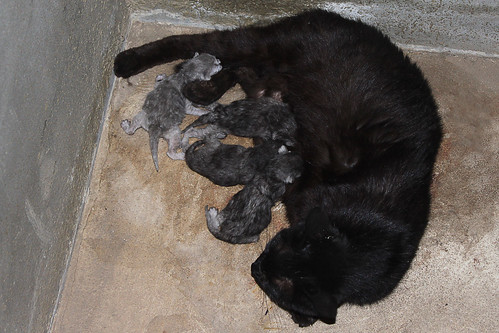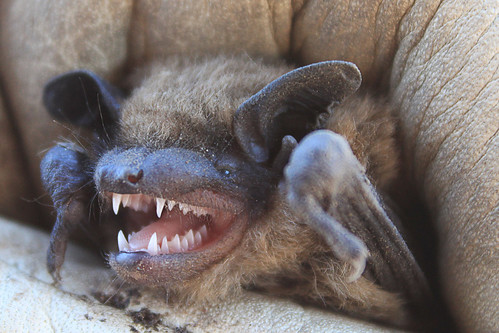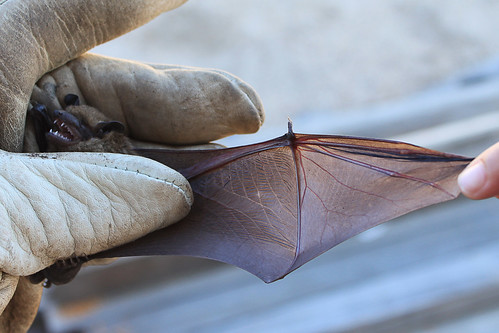 Four kittens and a very pregnant momma cat
Four kittens and a very pregnant momma catOn the way to the Men's Discipleship Evening at church, Joshua and I saw a sad sight. Someone had dumped a little black dog along with four kittens and their pregnant mother. The little dog was standing guard over the cats as it sat under a lone oak tree on the side of the road. We turned around and watched them for awhile and noticed the little black dog diligently herding the kittens away from the road as cars passed. We felt helpless to do anything since it was over 100 degrees Fahrenheit and we were supposed to help out serving in the cafe at church. We reluctantly drove on, but Joshua prayed that they would still be there safe and that we could rescue them on our way home.
Four hours later, all six animals were as we had left them. I made a valiant effort to capture the little dog even getting a hold of her several times only to have her struggle free. She refused to leave the kittens so I had to rethink how I was going to capture them all. (I vowed to Joshua that I wouldn't leave any behind.) I scooped up the mother cat thinking the kittens would want to follow. I was wrong. All they wanted to do was run around playing in the grass and running up trees. Did I mention I was doing this in the dark with only the headlights from our Jeep for illumination?
After about an hour I managed to get hold of the last kitten. To Joshua's dismay, they seemed perfectly happy to carry on their playful antics throughout the Jeep leaping from seat to seat chasing each other. With all the cats wrangled up, I finally coaxed the little black dog into letting me pick her up. She was happy to be reunited with the kittens.
Our drive home was anything but uneventful, but we made it. You can only imagine the scene as I tried to drive with one kitten pawing at my legs, one in my lap, and another climbing on my shoulders as I juggled my cell phone to let Edna know why we were so late.
When we got home Edna immediately snatched up the little black dog and informed me that we're keeping her. By the time I got all the cats situated for the night, Edna had already given the little dog a bath and made a spot for her on the sofa (as well as in her heart I suspect). We'll see what happens. All I know is that what was once abandoned and lost is now found.
Happy to be loved












